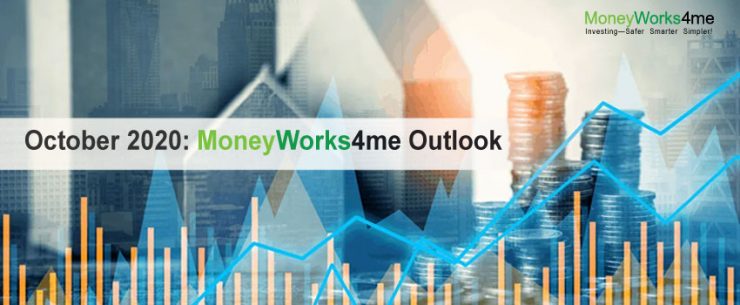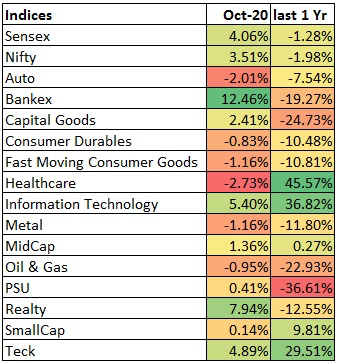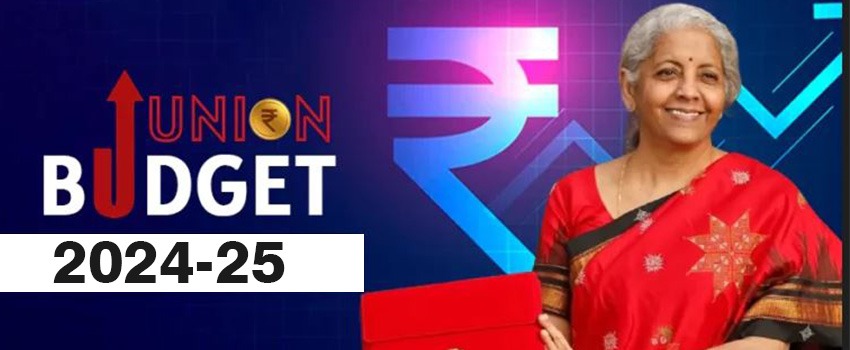This article covers the following:
Review
As of Oct 31, 2020, Nifty closed at 11642, around 1.5% higher over last year. In the last 3 years, Nifty is up 19% translating into ~6% CAGR.
Nifty has bounced back 55% from its intraday lows with healthy participation across the board.
Recently US election outcome and optimism around Vaccine have led to new highs for Nifty. The timeline for Vaccine approval and distribution remains uncertain for now. This optimism has led to a rally in Nifty well past old highs, led by banking stocks. We find that markets are not in correction mode anymore looking at last week’s action.
Stocks that benefitted from the Covid crisis may cool off but individual stocks that report good results will continue to perform well in lines with earnings.
FII bought Rs. 14,500 Cr worth of shares in Oct’20 while DII sold Rs. 17,300 Cr.
As per our previous note, GDP actual print came out a decline of 23.9% year on year. US GDP contracted by 9% and 33% annualized in the Apr-Jun’20 quarter.
Outlook
As of date, the average upside of our coverage universe is likely to be more than 10% CAGR over the next 3 years based on current estimates.
We find that the Nifty 50 index trades above its fair value while there are pockets of extreme overvaluation and undervaluation. A lot of liquidity helped beaten-down stocks to rally however, the economic indicators do not point to a V-shaped recovery as yet.
Companies in sectors like chemicals, pharmaceuticals, IT, Telecom, utilities, and rural-focused companies will report good earnings growth this year. Even if there is news of reopening or Vaccine, focus on companies that have good earnings growth over the next few years.
We are looking at companies that have good earning triggers over the next 2 years as we are not certain whether broad-based recovery will happen immediately. We are investing in companies i) coming out of sector consolidation/debt reduction, or ii) introducing new products, or iii) commissioning new capacities, or iv) executing orders in hand. This gives certainty of growth rather than plain anticipation.
We would avoid bargain hunting in sectors or stocks that may have become cheap but they have high debt or they operate in cyclical sectors. There is a good reason to believe that until demand recovers, the discretionary (usually cyclical) won’t come back.
We do not recommend investing on the basis of unlocking instruction/Vaccine news in select sectors like hotels, multiplexes, Airlines, etc. It may take a few quarters for these sectors to reach optimum utilization and hence profit normalization.
We find key trends that are happening which are structural in nature and may not reverse soon. Digital adoption by small and medium scale enterprises, unorganized to organized as balance sheet strength of latter helped survive pressure on business, increase in health consciousness opting to early diagnosis/life insurance. We are looking at opportunities in building materials, export-oriented textile or light engineering, and import substitute ideas. We have increased allocation to the Power sector and building material space where incremental data suggesting an improvement in the sector’s prospects.
Risks
How does the US election outcome affect the US Economy and Indian stocks?
Biden Administration proposed to have more expansionary policy versus the Trump administration. Biden Administration has laid out an expansion plan through an increase in infrastructure, minimum wages, healthcare, and social security for the middle-class up to USD $5 trillion from 2020-2030. This can lead to weakness in dollars and an increase in inflation in commodities. Emerging markets with a higher share of natural resources production can benefit from the same.
This would be funded by an increase in taxes on the rich and corporates. Taxes on companies and ones with headquarters outside the US; capital gain taxes and tax on individual more than USD 400,000 annual salary. This might affect US stock market returns due to a drop in earnings growth from Corporates.
Favourable immigration policy. Biden Administration admires skill-based immigration which is helpful for the Indian IT sector.
A more pragmatic approach toward pharma companies. Biden will have a more rational approach towards drug pricing and capping. Benefit or disadvantage can’t be quantified on Indian Pharma.
India runs a trade surplus with the US due to large exports in IT services and Pharmaceuticals. Biden administration is less aggressive in trade deficit agenda which will cool off fears of heightened duty on Indian goods. Instead, to reduce dependency on China, experts expect the Biden office will look for supply chain diversification thereby benefiting India in the manufacturing sector as well.
Biden Administration pro-climate change: New President joining Climate change will put pressure on India to cut down carbon dioxide emissions. India would need a large investment in renewables and cutting down dependence on fossil fuel like coal, oil, and thermal power.
Indian Economy
GDP data saw the biggest decline versus other countries due to more stringent lockdown as India’s large population made it necessary to contain the virus quickly. Unfortunately, the cases are still on the rise as more people returned to work and started traveling.
Many sectors are coming out of the hibernation of Lockdown from low 10-20% utilization to around 80% utilization in Sept’20. Popular high-frequency data like car registration, toll roads, diesel usage, and electricity generation show month-on-month improvement but still lower than pre-COVID levels and versus the previous year.
We are tracking i) GST collections per month (starting August) ii) Auto Sales (Retail sales still lower than the previous year) iii) Cement offtake (Improving sequentially). Other indicators may or may not indicate actual recovery as they might be too concentrated on one segment or they might be lagging indicators.
While every sector operates in the same economy, the effects of Covid-19 would affect them differently. The experts are using the term ‘K’ shaped recovery for the same. On the right side upward curve shows few sectors benefitting immensely while the lower curve showing other sectors falling further.
Examples include (beneficiary vs loser) OTT versus cinemas, private transport versus public, organized versus unorganized, telecom versus electricity, consumer foods versus consumer discretionary, fast-food chain versus hawkers, edtech versus schools.
Beyond a point forecasting, macroeconomics is tough. We remain optimistic that the pandemic will affect only near term economic parameters but it won’t dampen the demographics of the country nor can it stop the long term momentum in GDP growth and rising consumerism.
With Vaccine news stocks have rallied further, will they correct?
Currently market rallied on the back of the US election outcome and Vaccine news on Monday, 9th November 2020. While Vaccine news certainly is very positive, the market has already rallied pricing economic recovery in the next financial year. Even after final approval, vaccine manufacturing, and distribution is an uphill task, it may take 10-18 months for a reasonable % of the population to receive the vaccination. Experts say that by the time Vaccine is administered, many hotspots/clusters would have developed herd immunity.
The expectation of large stimulus and Vaccine together led to a steep rally in last week. While the market does look expensive wherein few stocks are pricing in a very optimistic near-term future, we will see a pullback if the not deep correction in the near term. However, since the overall market is not in correction mode anymore, the individual stocks are doing well based on business performance.
Based on market valuation and the number of opportunities available, we recommend an allocation to safe liquid funds/Fixed Deposits (10-20%) within in equity portfolio for capturing new opportunities. The rest of the portfolio can be held despite volatility based on news flow or a rise in the number of Covid cases. We can’t avoid volatility completely as markets move in unpredictable patterns.
We recommend equity investing only for long term funds and making near term events irrelevant. We do not find any merit in second-guessing what’s going to happen in the next 6 months-1 year. If the shortlisted stocks are good companies, with good growth prospects, they will deliver returns in lines with business performance. Picking the right stocks is easier than predicting the market direction. Everyone wants to buy the bottom and sell at the peak, but it’s easy only in hindsight. No one expected new highs amidst the economic slowdown. Stocks that have risen in price backed by fundamentals will retain their returns.
We continue to recommend Gold Fund/Gold (up to 5-10% of the portfolio) as a hedge from contagion risks.
How to manage asset allocation: If you are afraid about the economy, people losing jobs, your own finances, commit lower than usual in equity. Say instead of Rs. 100 in equity in normal times, commit only 60 or 70 or even 50 is fine. But after doing this, do not wait for bottom prices or get scared of volatility because there is always a risk of missing out on 13-15% CAGR returns right on our platter. Keep buying with this amount and wait for your comfort to add more. This is better than regretting missing out on the entire amount.
How to allocate funds: Restrict your allocation to 3-5-7% in each stock and diversify across 20-25 names. And not more than 25% in each mutual fund. This will keep you at peace, and not significantly dent your portfolio performance.
Avoid any type of regret while investing. Regret can come either missing stock or not adding enough to a winning stock. Rather focus on overall strategy as explained above.
Beyond this, tinkering with asset allocation will only reduce long-term returns thereby missing one’s target corpus. We have diversified our stocks portfolio, we have diversified assets and we have a long term horizon. Together this takes care of all potential risks in investing.
MoneyWorks4me Outlook:
If you liked what you read and would like to put it in to practice Register at MoneyWorks4me.com. You will get amazing FREE features that will enable you to invest in Stocks and Mutual Funds the right way.
Need help on Investing? And more….Puchho Befikar
Kyunki yeh paise ka mamala hai
Why MoneyWorks4me | Why Register | Call 020 6725 8333 | WhatsApp 8055769463












